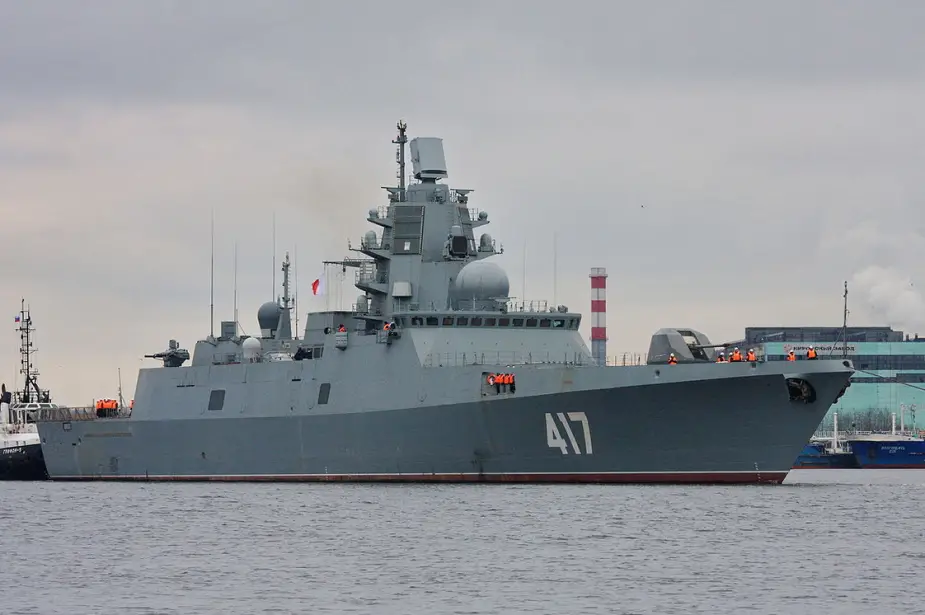The latest frigates of project 22350 will be deployed in the Black Sea. They are armed with Kalibr cruise and Tsirkon hypersonic missiles. All the necessary infrastructure will be built. Experts say the Russian frigates will be a major deterrence in the region. Their deployment is a response to the USA after its withdrawal from the INF Treaty which poses a threat of deployment of American attack weapons in Romania, the Izvestia said.
 Admiral Gorshkov Frigate (Picture source: Wikipedia)
Admiral Gorshkov Frigate (Picture source: Wikipedia)
Defense Ministry sources said a decision in principle to deploy the frigates in the Black Sea fleet had been made. Berths, workshops and arsenals will be built for them. The frigates will play a major role, expert Dmitry Boltenkov said. "The modern warships will considerably expand the capabilities of the Navy. They will radically change the military balance in the region. Cruise missiles will target the US base in Romania. They will be a powerful deterrence in the Black Sea area," he said.
The Russian Navy operates a single frigate - the Admiral Gorshkov. The Admiral Kasatonov second frigate is undergoing acceptance trials. It is likely to become operational by the end of the year. The third and the fourth the Admiral Golovko and the Admiral Isakov have to join the Navy in two years. Two more frigates were laid a year ago.
The frigates have stealth features. They were produced with composite materials and have a new hull and superstructure architecture. It all decreased the frigate signature. The warships destroy surface and ground targets from 130mm artillery gun A-192M and by antiship Onix and cruise Kalibr missiles.
In the near future, the frigates have to be armed with hypersonic Tsirkon missiles. No air defense in the world can intercept them because of the high speed. They are being tested. In February, the Admiral Gorshkov fired a Tsirkon at a ground target from the Barents Sea.
Poliment-Redut and two Palash artillery guns defend the warship from an air raid. The former has Poliment radar with a phased antenna array. The missiles are kept in universal vertical launchers comprising modules of four or eight cells each. Each complex can attack 16 targets at a time. It mostly intercepts airplanes, helicopters and cruise missiles.
The automatic control is easily integrated with others into a single combat contour. An automatic control system has been tested in Crimea. It integrates all air defense of the peninsula, including warships and aircraft. It ensures single command of fighter jets, bombers, attack jets, helicopters, drones, as well as air defense and radars.
The Admiral Kasatonov will have a number of robotic systems to increase combat effectiveness. They are Orlan-10 drones and unmanned boats. The drones allow the frigate to operate as a scout and an electronic warfare complex.
Rear provision will enjoy major attention. The Russian Navy used to lease berths from Ukraine in Sevastopol and there was no sense to invest in them. The situation has changed and new warships and submarines are coming, Boltenkov said. "A warship needs rear provision. It needs a berth, fuel supplies, compressed air, electricity, steam. The crew need food. Workshops are necessary to maintain mechanisms and modern weapons. There should be warehouses for missiles and torpedoes and cranes to load them. The Soviet coastal infrastructure could not provide everything necessary and the service life of warships decreased," he said.
The new frigates will need a free space in Sevastopol. At present, the base accommodates a lot of Ukrainian warships. They can be moved to the base in Lake Donuzlav, the Izvestia said.
© Copyright 2020 TASS. All rights reserved. This material may not be published, broadcast, rewritten or redistributed.



